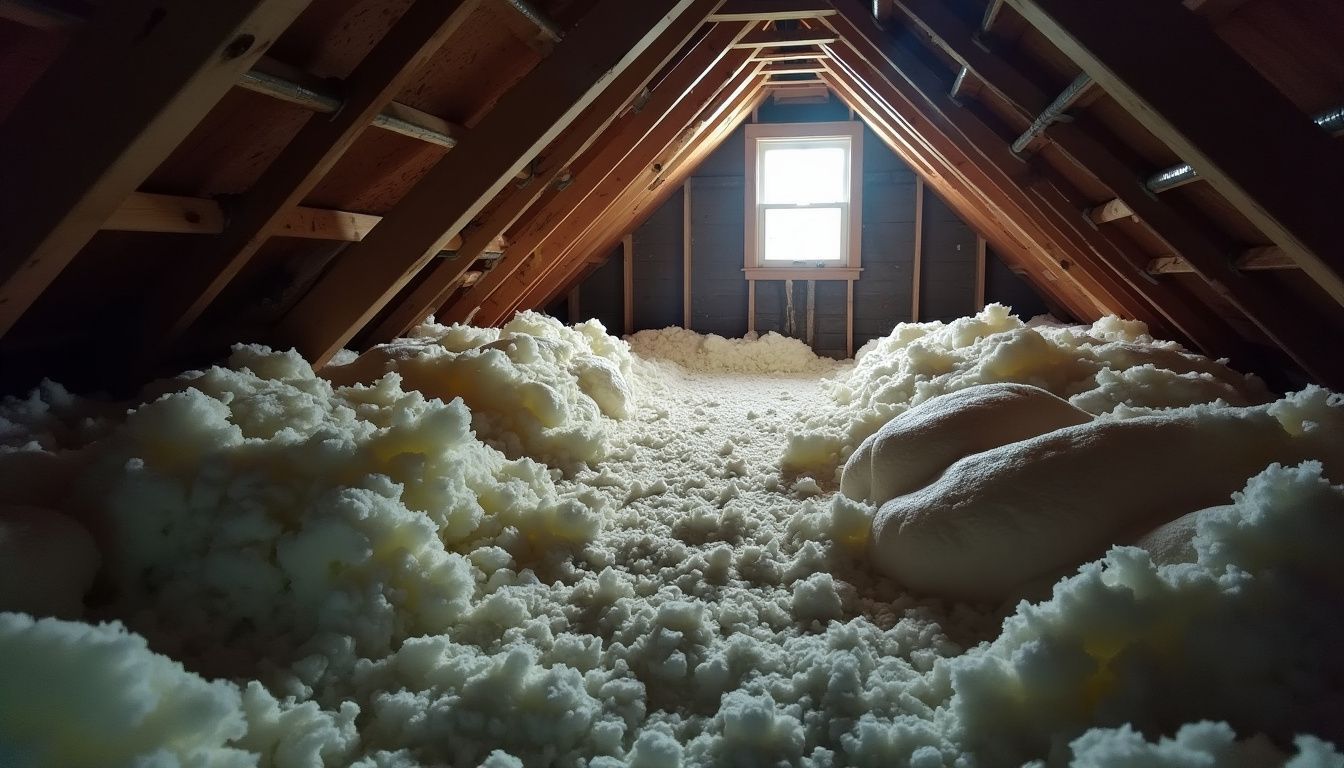Saving energy and reducing bills are important for every homeowner. Proper insulation in your home can cut your energy costs by up to 20%. Insulation works by keeping your house warm in winter and cool in summer, which means you need less heating or cooling.
There are many ways to insulate a home, from putting in new insulation materials like fiberglass, foam board, and cellulose to sealing air leaks with caulk or weatherstripping. These steps not only make your living space more comfortable but also help the environment by lowering carbon emissions.
Investing in areas like attic insulation can also make your HVAC system work more efficiently, saving even more money on energy costs. This article will show you the best ways to insulate your home effectively.
Keep reading to learn how simple changes can lead to big savings.
Ways to Insulate Your Home and Save on Energy Bills
Insulating your home effectively can lead to significant savings on energy bills. Explore different methods like adding insulation in walls and sealing air leaks for improved comfort and efficiency.
Installing insulation or draught-proofing
Installing insulation and draught-proofing significantly boosts home energy efficiency. This approach reduces heat transfer, keeping your space warm in winter and cool in summer. Use foam insulation for walls and attics.
It provides excellent thermal insulation while also minimizing noise.
Draught-proofing seals air leaks around doors and windows. This simple step prevents cold drafts, enhancing comfort. Both methods can lead to substantial savings on energy bills. Prioritizing these upgrades makes your home more eco-friendly and reduces carbon emissions.
Consider DIY insulation for cost-effective solutions.
Types of insulation materials
Home insulation comes in various materials. Fiberglass is popular for its cost-effective nature. It works well in attics and existing walls. Foam board provides excellent thermal resistance.
This type of insulation is ideal for basements and exterior walls. Spray foam expands to fill gaps, making it great for sealing air leaks. Cellulose, made from recycled paper, offers eco-friendly insulation.
It also provides noise reduction benefits.
Choosing the right insulation materials enhances energy conservation. Proper insulation boosts comfort and reduces energy bills. Explore the benefits of proper home insulation next.
Sealing air leaks and adding insulation
Sealing air leaks stops warm or cool air from escaping. Use caulk or weatherstripping to cover gaps around windows and doors. This simple step can make your home more comfortable. Adding insulation in key areas, like the attic, keeps your home cozy in winter and cool in summer.
Various insulation materials, like foam or fiberglass, can help you save on energy bills. An insulation upgrade reduces drafts and enhances your HVAC systems’ efficiency. Weatherproofing not only lowers energy costs but also promotes eco-friendly living.
Investing in proper insulation is a smart home improvement choice.
The Benefits of Proper Home Insulation
Proper home insulation significantly lowers your energy bills. It also increases comfort by keeping your home at a stable temperature year-round.
Lower energy bills
Proper insulation significantly lowers energy bills. Homeowners can save up to 20% on heating and cooling costs by sealing air leaks and adding insulation. Energy-efficient appliances also contribute to these savings.
Attic insulation plays a crucial role in maintaining comfortable temperatures. Investing in draught-proofing can enhance energy efficiency further. Eco-friendly insulation materials reduce heat loss and lower carbon emissions.
Smart weatherization techniques ensure a cozy home while saving money.
Increased comfort
Lower energy bills lead to a more comfortable home environment. Insulation keeps your home warm in winter and cool in summer. This steady temperature makes daily living more enjoyable.
You can relax in a cozy room without drafts. Quality insulation reduces the need for heating and cooling, which also helps lower energy costs.
Eco-friendly insulation materials can further enhance comfort. They not only save money but also create a healthier space. Proper insulation and draft-proofing can make a significant difference in your home’s comfort level.
You can enjoy a space that feels just right year-round. Energy-efficient appliances work hand-in-hand with insulation to create an overall comfortable living experience.
Reduced carbon emissions
Proper home insulation reduces carbon emissions. Insulating your home decreases the need for heating and cooling. This action lowers energy consumption. As a result, fewer fossil fuels burn to produce energy.
Eco-friendly insulation materials play a crucial role in this process. They help to keep your home comfortable while minimizing harm to the environment. Using energy-efficient appliances also contributes to lower emissions.
Together, these steps lead to a greener home and a cleaner planet.

